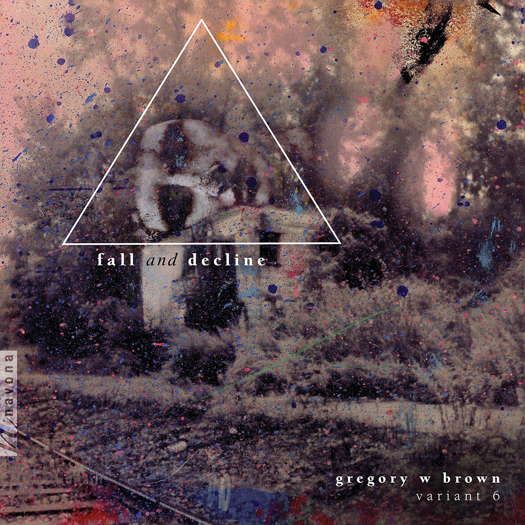- CC-BY-SA-2.5
- Anton Grigoryevich Rubinstein
- Stokowski
- William Wolstenholme
- Das Rheingold
- Canadian
- Keith Jameson
- Levy Lorenzo
 DISCUSSION: What is a work? John Dante Prevedini leads a discussion about The performing artist as co-creator, including contributions from Halida Dinova, Yekaterina Lebedeva, Béla Hartmann, David Arditti and Stephen Francis Vasta.
DISCUSSION: What is a work? John Dante Prevedini leads a discussion about The performing artist as co-creator, including contributions from Halida Dinova, Yekaterina Lebedeva, Béla Hartmann, David Arditti and Stephen Francis Vasta.
 FEEDBACK: She said WHAT? Read what people think about our Classical Music Daily features, and have your say!
FEEDBACK: She said WHAT? Read what people think about our Classical Music Daily features, and have your say!

Brief Time Well Spent
JOHN DANTE PREVEDINI listens to music for six solo voices and electronics by Gregory W Brown
'... engaging, provocative and full of genuine surprise.'
Navona Records' new release, Fall and Decline, is the recording debut of the recently-composed eponymous work in five movements for six solo voices and electronics by the American composer Gregory W Brown, here performed by the vocal sextet Variant 6. Each of the five movements is a setting of text from a different period in human history, the common focus among them being the impermanence of all human endeavors. The album, which is available both digitally and on vinyl, comes with liner notes that include artist biographies, texts and program notes by the composer.
At thirty-three minutes the work is just long enough to constitute a full album on its own, and Brown uses this relatively brief time effectively to create a listening experience that is at once engaging, provocative and full of genuine surprise. This is evident in many dimensions of the music's structure, from the layout of the form across the five movements to the composer's use of harmony, rhythm and the electronic soundscape. Perhaps even more essential, however, is that all of these elements come together holistically in a way that really does convey the meaning of the work's theme: the inevitability of a fall and a decline. Brown clearly understands the mechanics of symbology and how archetypes can be embedded within sonic structures to deliver meanings that are potent and immediate.
We begin with movement one, 'but after six years', a setting of an excerpt recounting the exploits of the Achaemenid king Cambyses II in a 1614 English translation by Samuel Purchas. The vocal writing is percussive, driving, imitative and angular, and the harmonies are judiciously balanced in a blend between the highly dissonant and the highly consonant. A bell - recorded into the electronic track - acts as a kind of idée fixe punctuating the vocal textures throughout the movement, and the sung name of Cambyses becomes a kind of second theme, constantly repeating and growing quieter as it is gradually distorted through various dimensions of electronic processing.
Listen — Gregory W Brown: but after six years (Fall and Decline)
(track 1, 1:27-1:57) ℗ 2021 Navona Records LLC :
In the brief second movement, 'the wine of life', we hear a setting of several lines from the Rubáiyát of Omar Khayyam, a work of twelfth-century Persian poetry. Here the image is of the gradual emptying of life's essence while time passes, set to purely a cappella music that is slower, quieter and more consonant than in the first movement. The rhythm has a gentle pulse that believably conveys the dripping of wine, while the harmonies convey the richness of the wine's flavor with a blend of pentatonic, suspended and triadic sonorities.
Listen — Gregory W Brown: the wine of life (Fall and Decline)
(track 2, 1:00-1:30) ℗ 2021 Navona Records LLC :
The next two movements structurally and stylistically resemble the first two and serve to create a sense of symmetry for the overall five-movement work. The third movement, 'After the President's Speech You Dream of Corpses', is a setting of a 2007 poem by Todd Hearon reflecting on the American war in Iraq. Here the voices engage in more interplay with the electronics, which in turn distort the voices through fragmentation, alterations of pitch, artificial reverb and audio reversals. The bells from movement one seem to return as well, though here they are electronically stretched out until they become sustained tones. Movement four, 'as orchards bloom again', virtually reprises the music of movement two to set a different text. Here, the words of artist Sadakichi Hartmann reexamine the old quatrains of Khayyam by name and challenge their pessimism with imagery of orchards replenished and cups refilled.
The fifth and final movement, 'sixty phantoms of kings', is a setting of an excerpt from Edward Gibbon's 1789 History of the Decline and Fall of the Roman Empire. The choral writing is syllabic and brooding, always hinting at restrained force and underscored by the constant drone of the electronically-stretched bells we have seen before. The conclusion of the final movement I will avoid describing here fully, because I think the surprise is too good and too meaningful to risk spoiling for a potential listener. Suffice it to say that Brown makes a decision that alters the listener's perception of everything that has come before it and - for me at least - drives home the essential purpose of the entire work beyond a shadow of a doubt.
Listen — Gregory W Brown: sixty phantoms of kings (Fall and Decline)
(track 5, 6:10-6:40) ℗ 2021 Navona Records LLC :
Gregory W Brown indicates in the liner notes that Fall and Decline, from its composition to its recording and editing over the course of a few years, is 'a product of its time: hope and creativity in the face of decline'. I imagine many people these days would agree with the notion that ours is a time of decline, even if they might bitterly disagree over what the nature and source of that decline are. If this recording can nonetheless provide any perspective, I believe it is the reminder that life is always a window of opportunity, however fleeting, to live as well as we can for the sake of both the present and the future. After all, Cambyses' reign did not last particularly long, but the aftermath of its destructiveness is still being sung after 2,500 years. What kind of aftermath are we leaving behind in our own brief time?
Copyright © 28 August 2021
John Dante Prevedini,
Connecticut, USA

CD INFORMATION - GREGORY W BROWN: FALL AND DECLINE
MORE ARTICLES ABOUT VOCAL MUSIC
MORE ARTICLES ABOUT ELECTRONIC MUSIC
MORE ARTICLES ABOUT CLASSICAL MUSIC AND THE USA
RECENT CLASSICAL MUSIC CD REVIEWS


